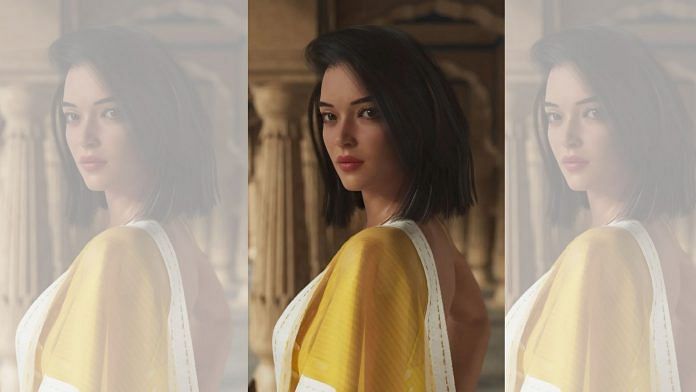New Delhi: India’s first virtual influencer Kyra’s debut collaboration with leading audio brand boAt has clocked over 20 lakh views on Instagram and more than 10 lakh on YouTube, less than a fortnight after the ad’s release.
Kyra (@kyraonig), the forever 21-year-old, short haired “model, traveller and dream chaser”, who has been on social media since January, frequently posts pictures mimicking real influencers — vacation photos, mirror selfies and occasional photoshoots. Although her still photos are almost human-like, the effect doesn’t quite carry over to her videos.
Created by Himanshu Goel of Top Social India and having over one lakh followers on Instagram, Kyra is one of the latest entrants to the long list of computer-generated influencers, most of whom have an elaborate backstory and have gained sustained success.
Krya’s international predecessors
One of the earliest virtual social media influencers is Lil Miquela, a 19-year-old Brazilian-American model and musical artist who made her digital entry through Instagram in 2018. Today, she boasts over 30 lakh Instagram followers, over 2.8 lakh YouTube subscribers and brand deals with labels like Calvin Klein and Prada.
Last year, it was reported that she charged $8,000 for every sponsored post. Known for singing both in English and Portuguese, Miquela’s music video for her single ‘Hard Feelings’ was featured in the US music fest Lollapalooza last month. The festival was held in a virtual mode.
Another famous name in the sphere is Shudu — a Black model hailing from South Africa, who is dubbed as the world’s first digital supermodel. Created by former fashion photographer Cameron-James Wilson, Shudu was designed along with six more virtual models collectively called ‘The Diigitals’ — the world’s first all-digital modelling agency launched by Wilson.
Virtual humans in K-pop
Korean virtual influencer Oh Rozy (@rozy.gram) — who is known to have a face that was created using 3D synthesis technology by collecting facial shapes the M-Z (Millenial-Gen Z) generation prefers — was developed in August 2020. She has bagged over 100 sponsorship deals. One of her commercials for a life insurance company has snatched over 90 lakh views since its release last year. This May, the company extended its contract with Rozy for another year.
Rozy has also branched out into singing with her debut single ‘Who Am I’, which dropped in February. Her second song ‘To The Sea’ is also out.
In a first, a four-member K-pop girl group, Aespa, debuted with its AI avatars in November 2020. Replete with a distinct concept and fictional universe, their music videos feature the idols as well as their virtual version.
A few months later in March 2021, Korean entertainment agency Pulse9 debuted a 11-member girl group called Eternity, composed of only AI-members. The hyper-realistic virtual characters not only have a distinct face and voice but also unique personalities, to replicate actual K-pop idols.
Computer-generated influencers in China, Brazil
According to a Bloomberg report, virtual singers are a multibillion-dollar industry in China. The industry has grown 70 per cent since 2017 and reached a worth of $960 million in 2021.
Lu do Magalu, a Brazilian non-human, has over 25 million followers on social media – over five million on Instagram alone. Lau, along with other Brazilian virtual humans Any Malu and Nobody Sausage, are among the top 10 most followed virtual influencers in the entire world. They collectively have over 40 million followers.
Controversies & questions
For companies developing them, AIs will stay forever young, can work round the clock, and don’t come with the risk of wading into scandals or controversies. However, that hasn’t made these famous virtual humans immune to negative press.
In 2019, a Calvin Klein ad showing supermodel Bella Hadid sharing a kiss with digital influencer Lil Miquela was slapped with “queerbaiting” accusations.
According to a Korea Times report, questions are also being asked about challenges AI pose to the K-pop industry. There is fear of virtual singers falling prey to deepfake porn, digitally-altered pornographic videos and images that replace the face of the subjects with someone else’s loom large. Hypersexualization is another big issue.
Also, there is the overriding issue of copyrights in case of groups like Aespa. Experts ask what will happen to the digital entities when members have terminated their contracts with a certain company.
Also read: Why netizens are ‘creeped out’ & concerned over Alexa’s mimicry of ‘grandma’s reading’






